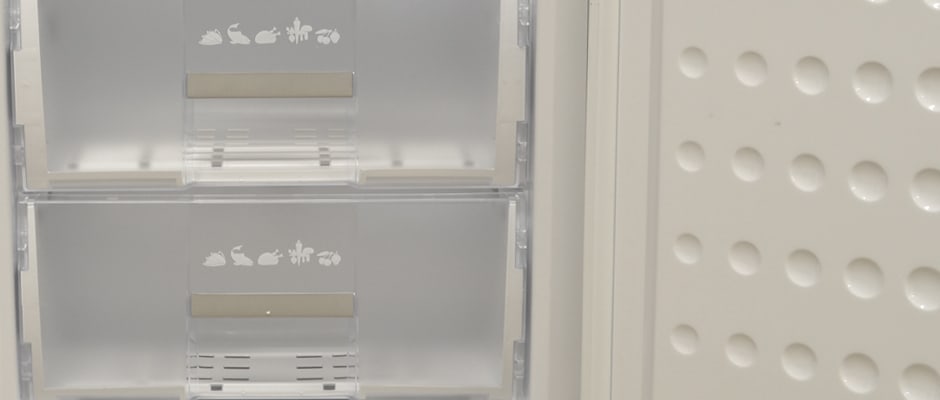Introduction
With an MSRP of $1,250—quite low for an appliance of this kind and quality—it's absolutely worth it if you need a robust compact fridge for a nice apartment with a small kitchen. Fridges like the {{product.brand.name}} are very much specialty items, and consumers would likely never buy something like this if they have the space for a full-sized fridge. However, because the market is much smaller than the one for larger models, really high-end options for fridges of this size—usually products made by Liebherr—can sell for almost three times as much. It's almost a steal if you can find it on sale, which we did, for as little as $900.
This machine offers solid temperature consistency in both the fridge and freezer, vegetable drawers with moisture retention that puts the major brand names to shame, and a finish that would add more than a touch of class to any kitchen. That said, a lot of the extra features on full-sized fridges aren't found here. There's no ice maker or water filter to speak of, and the low height of the freezer drawers can make them a little bit of a pain to get to. If you don't mind having a simple appliance that very much delivers on the main points of a fridge's job description, though, this is definitely one to consider.
Front
{{section_header}}{{section.name}}{{/section_header}}
You may have a hard time finding appliances that match this one. The {{product.brand.name}} has a smoky, silver exterior finish. It's lighter than traditional stainless steel, and the slight grain prevents it from being too reflective.
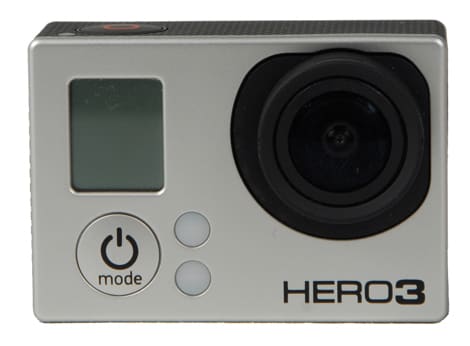
The textured silver finish is very resistant to fingerprints, but grease and oil will build up over time. What you really need to watch out for is dust - this fridge is attracts dust almost as readily as a pair of black dress pants.

This appliance may look fancier compared to many other fridges on the market today, but the controls are still about as basic as they come. Fridge and freezer temperatures are controlled using a single knob located at the top and front of the fridge compartment. It uses a basic numerical scale from 0 to 5, which no actual temperature indicator or thermometer.

There are two handles, the one for the fridge located directly above the one for the freezer. They're thin, vertical cylinders with a steel finish, and connect to the side of the doors using a strip of metal at the top and bottom of each. Easy to grip, and durable despite they're thin size, these handles are unobtrusive, sleek, and add a touch of aesthetic elegance to an eye-catching appliance.

Interior
{{section_header}}{{section.name}}{{/section_header}}
The interior of both compartments feel somewhat tall and narrow despite the shortness of the overall appliance. The fridge is located on the top, with the freezer on the bottom.
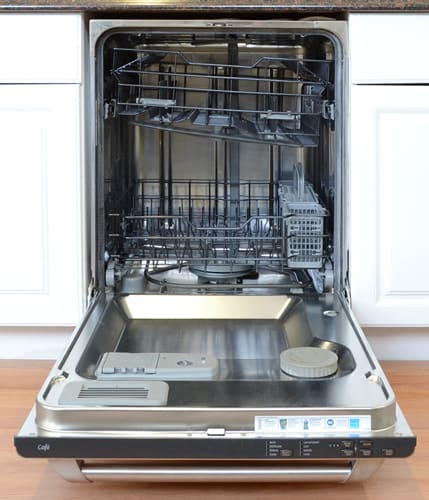
The interior of the CDWT980VSS.
Despite looking like a high-end fridge on the outside, the inside of the fridge compartment is actually quite sparse. It's broken up by two full-width adjustable shelves that can be placed on any of five shelf slots. There's a third fixed shelf on the bottom, set above two drawers. These matching pull-out drawers are positioned where you would normally find crispers, but lack any sort of humidity control. A single light bulb at the top emanates a pale, salmon-like glow that looks almost sickly compared to the whiter light found in many recent models.
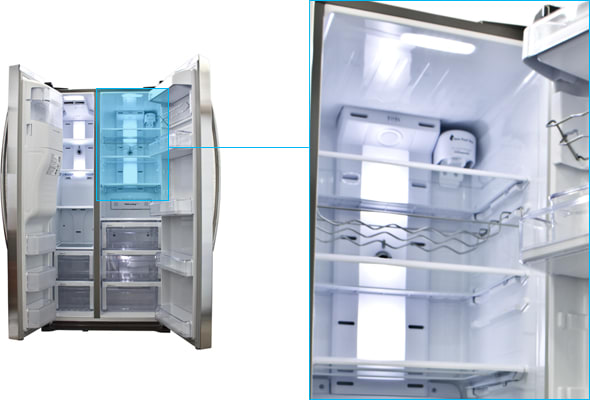
The interior can also be fitted with a beverage rack that can be placed onto any one of the unused slots.
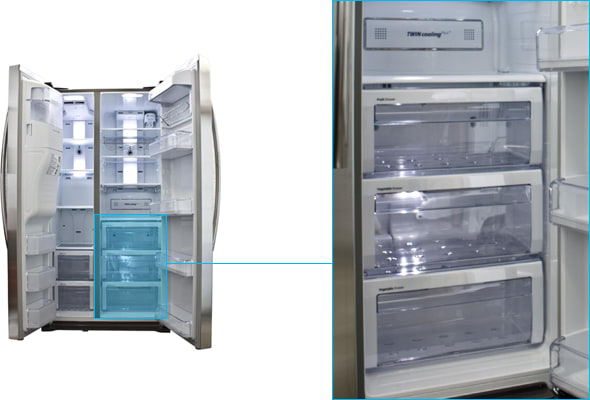
At the rear of the fridge is a small, angled section with a tiny hole in the middle. The {{product.brand.name}} has a regular defrost cycle which causes moisture to bead up on the rear of the fridge. This moisture trickles down the back, finally draining out of the hole. The fridge comes with a little plunger just in case anything gets stuck or water starts to build up.
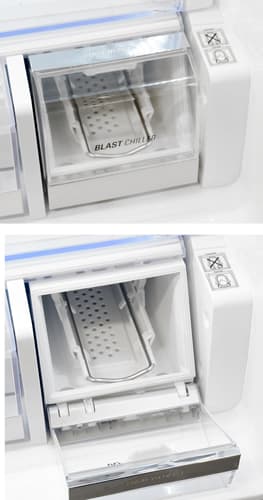
The crowning feature of this product is very easy to use and doesn't take up much room.
The fridge door has a similarly minimalist design, with a full-width dairy tray at the top and two full-width shelves set below it. There are two extra attachments designed to help with fridge storage: an egg tray and a divider.
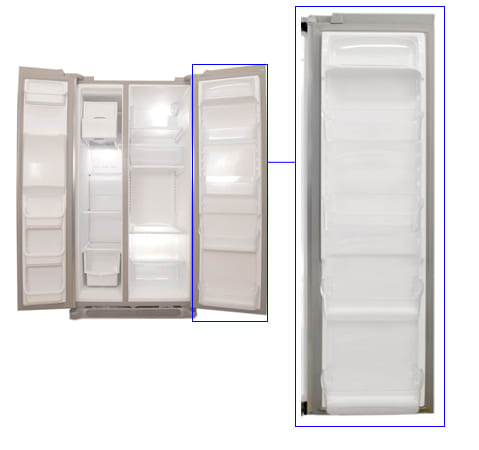
The egg tray sits loosely on the door shelf; it doesn't clip into anything, but instead seems to bank on the fact that it should be low enough to negate the risk of eggs falling out. Oddly, it's capacity only extends to 10 eggs, so be sure to eat up the first two of every dozen you buy right away.
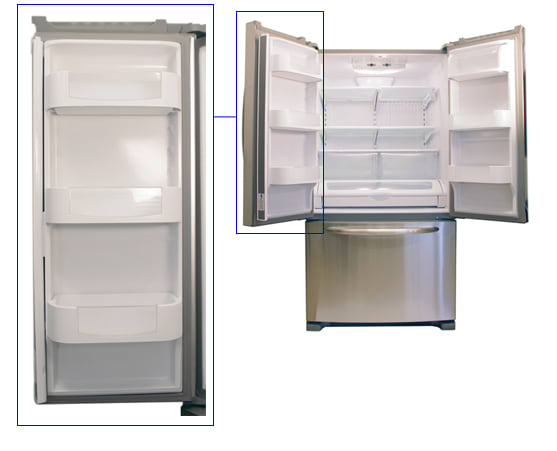
The divider clips onto a metal bar that can be fitted onto either of the two shelves, and doesn't quite extend all the way to the back. If you decide you want to use it, it can slide along the metal bar to allow for storage flexibility.

The freezer on the {{product.brand.name}} has three compartments and a pull-out ice tray. The top compartment isn't a drawer, but rather a frozen box accessed through a front panel that flips down.
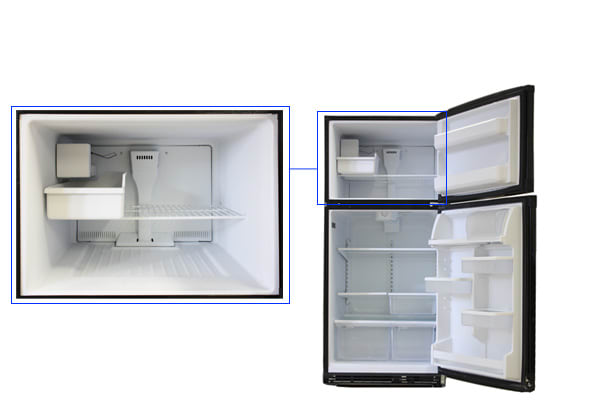
The ice tray is located at the very top, and can be used to store ice cube trays. It can also be removed completely, allowing for a little more vertical storage space in the top portion of the freezer.
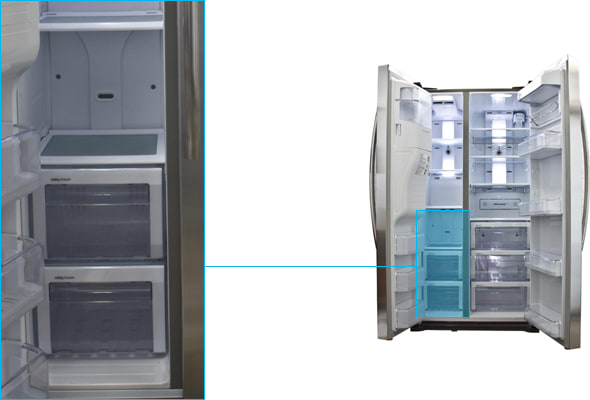
The second compartment is a more traditional full-sized pull-out drawer, while the bottom compartment - also a pull-out drawer - is much shallower.
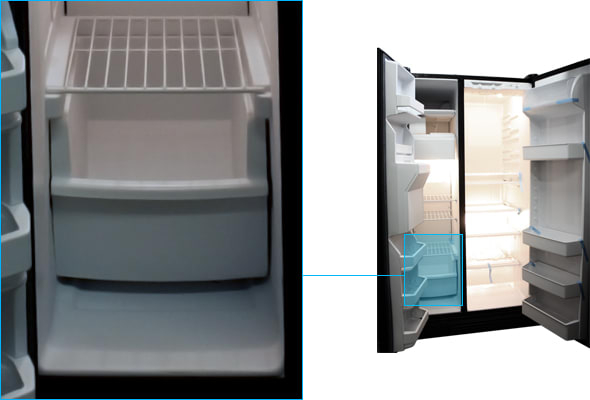
Like many smaller fridges, the freezer door has no shelf storage. It simply exists as a fourth wall to keep cold air inside the freezer.
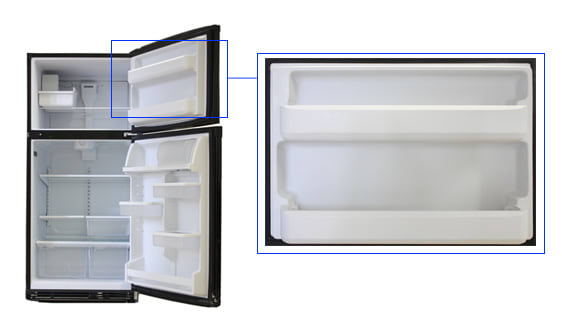
Back
{{section_header}}{{section.name}}{{/section_header}}
The back has a black metal grill covering everything but the exposed lower portion. These are the condenser coils, and their being visible is actually an element of older, low-end design. Most modern fridges have a "clean back" with the coils hidden inside. The reason for this is because the coils sit close to or up against a wall and can get really, really dusty. Dusty coils lead to a fridge that has to use more energy to function, and unfortunately they're hard to clean. Since the coils are made of sharp metal, paper towels used to clean them will rip and catch, and there's a small chance that the same thing could happen to your hands.
Behind the grill is a white panel made out of a thin material that almost feels like poster board, but is more likely a thin plastic. At the very bottom is an exposed portion that leaves all the innards of the appliance, including the condenser and the evaporator. While this allows for easy access if necessary for repairs, higher-quality fridges usually offer at least some sort of removable cover so nothing can get inside.
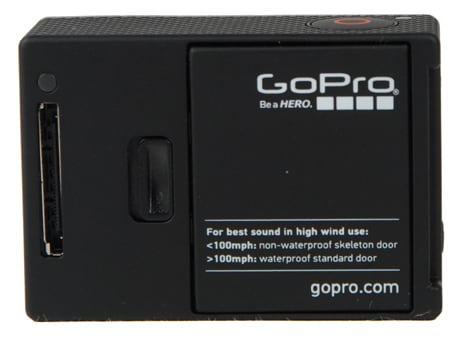
Sides
{{section_header}}{{section.name}}{{/section_header}}
The {{product.brand.name}} is a compact fridge, and so it should sit flush to the edge of your counters. If the sides happen to be visible, though, take comfort in the fact that they are finished with the exact same smooth, silver coating you see on the front, giving the appliance a sleek, uniformed look often found on high-end models.
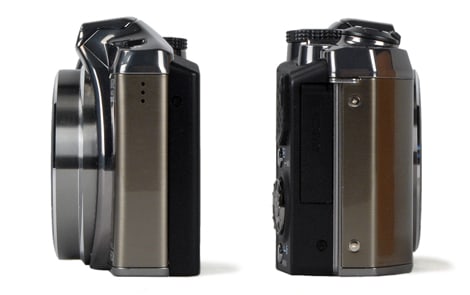
Olympus SZ-31MR iHS side views
Running Cost
{{section_header}}{{section.name}}{{/section_header}}
Despite being a compact fridge, the {{product.brand.name}} costs about as much to run as a smaller full-sized fridge. Using a standard rate of $0.09 per kW-h, we determined that this fridge will cost you about $33.22 per year. It's not a lot of money overall, but it is a somewhat expensive fridge to operate in proportion to its size.
Power Use Per Cu Ft
{{section_header}}{{section.name}}{{/section_header}}
Speaking of factors to consider in proportion to fridge size, operating costs don't really mean a whole lot unless you relate it to the size of the overall appliance. We determine how much energy is being used per cubic foot of available storage space in order to see just how efficient our appliances are. The {{product.brand.name}} does alright in this category - it uses about 0.16 kW-h per cubic foot of usable space. This is about as middle-of-the-road as you can be. It's far from being the most efficient fridge that we've tested, but it's also a lot better with energy distribution when compared to either cheaper or larger models, regardless of whether they're full-sized or compact.
Fridge Temperature
{{section_header}}{{section.name}}{{/section_header}}
Compact fridges aren't exactly known for top-quality temperature performance. The {{product.brand.name}}, though, shows that even smaller fridges, if made well, can deliver outstanding temperature control in a smaller package. The interior of the fridge remained very consistent over time. Even though the top of the interior remained just a little bit warmer than the bottom, the average temperature throughout remained around 37 degrees Fahrenheit, the ideal degree for food refrigeration.
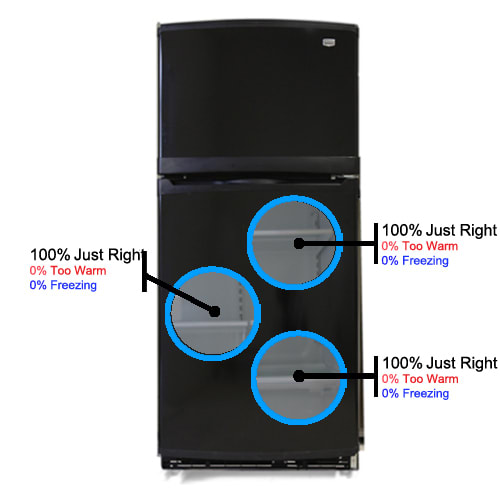
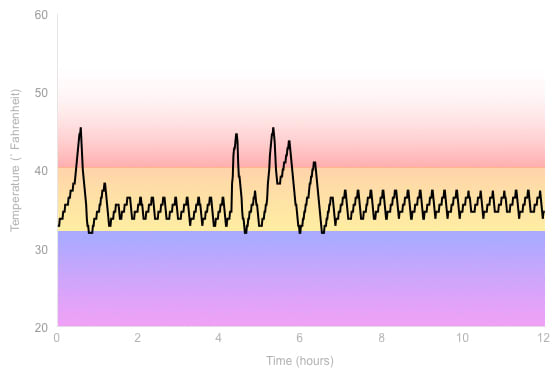
Freezer Temperature
{{section_header}}{{section.name}}{{/section_header}}
Many fridges that have a single temperature control end up putting one section at the perfect temperature, but at the expense of the other. If the fridge is perfect, the freezer is too warm; if the freezer is perfect the fridge is too cold. Not so with the {{product.brand.name}} - this appliance actually goes in the other direction. When the fridge was working at an optimal temperature, the freezer actually stayed at sub-zero temperatures. Not only that, it remained consistent over time, never fluctuating more than about 1 full degree. Items kept here remained very much frozen, and risk of freezer burn was kept low.
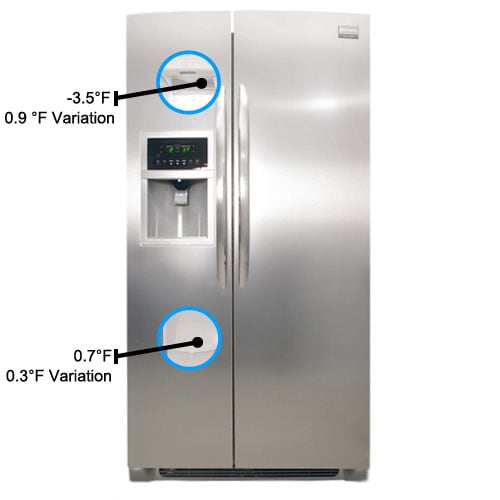
Vegetable Drawer
{{section_header}}{{section.name}}{{/section_header}}
With no humidity controls for the fridge's two small drawers, we didn't expect the moisture retention test to yield very positive results. However, it turned out to be one of the most surprising strengths this appliance has to offer. The drawers and the glass shelf above them must make a fantastic seal, because our test material only lost 0.08 grams of water per hour, a remarkably low amount. Despite having drawers that are about as low tech as possible, the {{product.brand.name}} managed to surpass almost every other fridge that we've reviewed in this category. If you're big on fresh produce but only have room for a compact fridge in your kitchen, this is definitely one to consider.
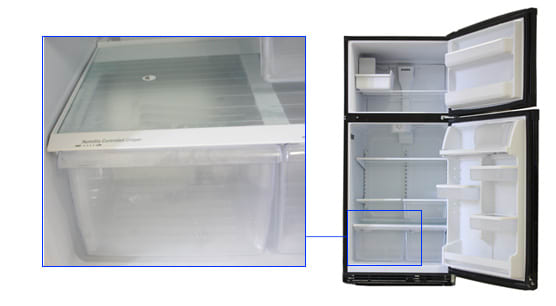
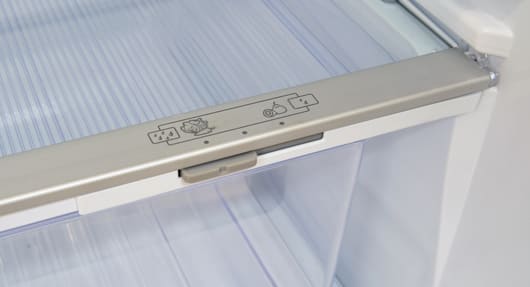
Power Loss
{{section_header}}{{section.name}}{{/section_header}}
Likely a result of the extremely low temperatures reached in the freezer when it was plugged in, the {{product.brand.name}} kept food thoroughly frozen for more than 36 hours after we pulled the plug.
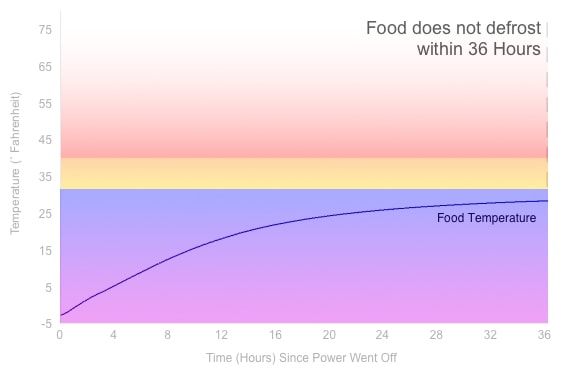
Freezing Performance
{{section_header}}{{section.name}}{{/section_header}}
We pack our freezers full of containers in order to test its performance at peak capacity. With so many items obstructing air flow, you might expect such a small fridge to take a large amount of time in order to actually freeze something. Actually, the {{product.brand.name}} managed to bring our room-temperature items down to freezing in just 1 hours and 12 minutes, a very good length. It's not perfect - we've tested fridges that got even closer to an hour even - but it's short enough that the quality of your frozen foods should still be optimal when thawed.

Usable Space
{{section_header}}{{section.name}}{{/section_header}}
Let's be clear, here - if you have unlimited kitchen space, you're not going to be buying this model. There's no reason to get a compact unless kitchen capacity is at a premium, since interior storage space is always going to be limited. The {{product.brand.name}} is by no means an exception to this rule. Fridge storage spans across three shelves and two matching drawers, and totals only 4.18 cubic feet of space.
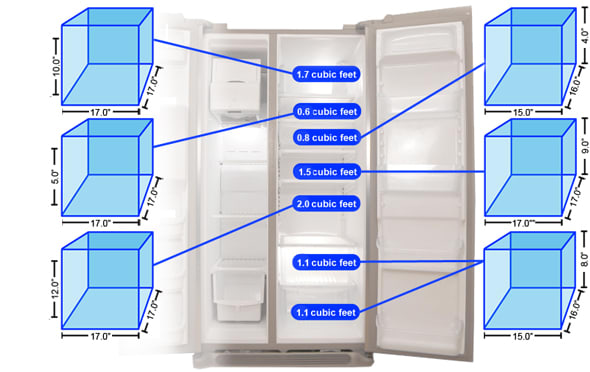
Some of that storage space is found on the fridge door, which provides room in a full-width dairy tray - which would have to hold more than just sticks of butter in order to really be practical - and two full-width shelves. The storage options here aren't really all that flexible, but they at least get the job done.
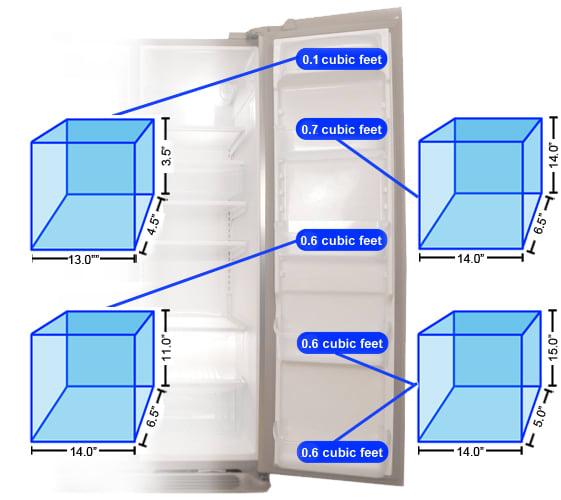
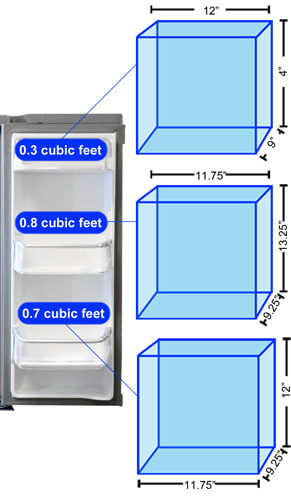
Like the fridge, the freezer is rather small, with a meager 2.02 cubic feet of storage. This is broken up into a top compartment with a flip-down opening, a large drawer under that, and a shallow drawer on the bottom. It's wide enough to fit an average full-sized frozen pizza, but the Thanksgiving turkey will be staying with somewhere else.
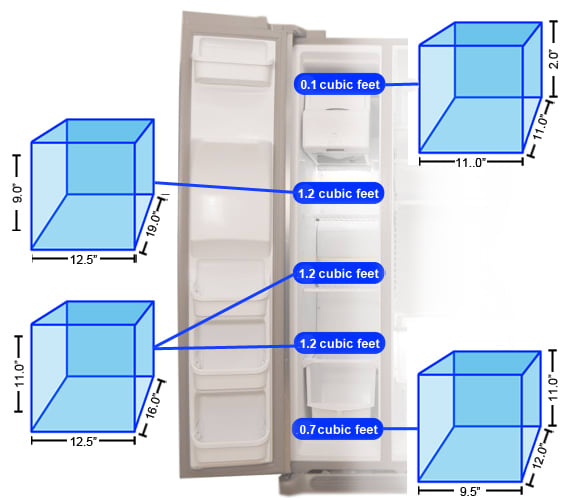
The {{product.brand.name}}'s freezer door works much in the same way as the lid on a cooler - you can open it to get to your food, and it helps to keep the cold air in when it's shut, but you're not meant to store anything on it.
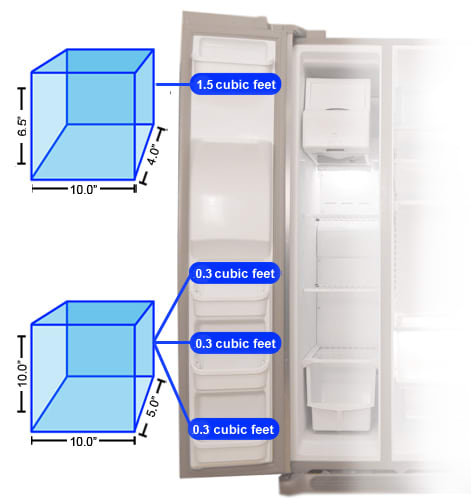
Below are the manufacturers own figures for capacity, and our own measurements for usable capacity. The manufacturers figures do not take account of the shelves, drawers and other removable features, but our measurements do account for the space these take up.
Ease of Access
{{section_header}}{{section.name}}{{/section_header}}
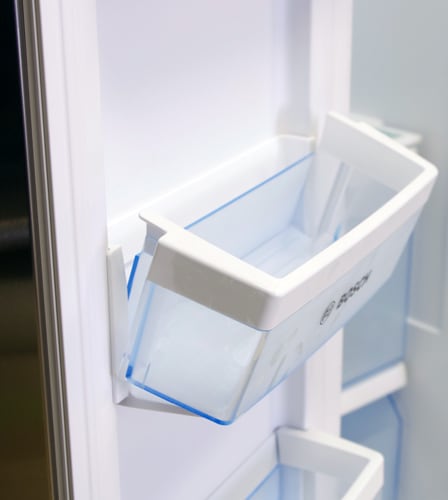
Shelves are fairly tiny, and their small number means getting to food should be very easy, even if it's stored at the back. The dairy tray is surprisingly frustrating, as the "handle" has almost no grip - you more or less have to use friction to push it open. Also, the fridge drawers aren't on any tracks whatsoever, just sliding along the bottom of the fridge and staying in place only by virtue of being next to each other in tight quarters. Despite this cheap approach, they do manage to slide in and out somewhat smoothly, as there's nothing for them to get caught on. Freezer drawers also don't slide in and out as smoothly as one would like, and you may have to wiggle them around a bit to keep them straight.
Controls
{{section_header}}{{section.name}}{{/section_header}}
This appliance may look fancier compared to many other fridges on the market today, but the controls are still about as basic as they come. Fridge and freezer temperatures are controlled using a single knob located at the top and front of the fridge compartment. It uses a basic numerical scale from 0 to 5, which no actual temperature indicator or thermometer.
The controls are very basic - it's just one dial! The only thing you can adjust on this appliance is the temperature, and the fridge and freezer are controlled as one unit. The knob uses a scale from 0 to 5, with no correspondence to any actual degree scale. There's also no recommended temperature setting, though the users manual does give you an ideal temperature to shoot for. If you want to know what degree your food is being stored at, you'll have to buy an external thermometer.

Water Dispenser
{{section_header}}{{section.name}}{{/section_header}}

Ice Maker
{{section_header}}{{section.name}}{{/section_header}}
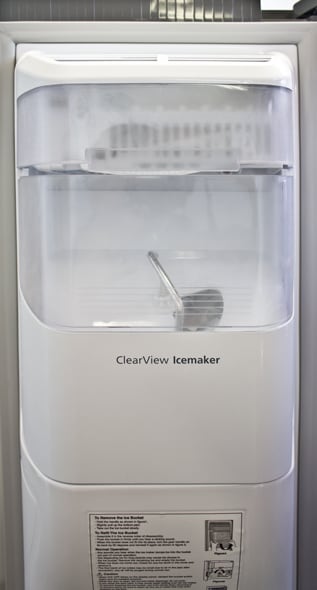
Cleaning
Noise
Other Features
{{section_header}}{{section.name}}{{/section_header}}
{{product.manufacturer_specs['Other Features Photo BROKEN?']}}
Conclusion
Energy Efficiency
The {{product.brand.name}} isn't much to write home about in this regard. With an average yearly energy cost that is, at best, on par with some full-sized fridges and, its efficiency just gets by. It's only glaring when compared to the other fantastic performance elements found in this fridge, making energy use a ball that wasn't dropped so much as set down gently on the floor.
Performance
Despite its simplistic controls and lack of any humidity adjustor, this fridge manages to produce excellent temperature consistency, an efficient freezer, and vegetable drawers whose simplistic design hides some of the best moisture retention we've ever seen. As far as our test results go, this fridge holds its own against those twice as big and twice as expensive.
Storage Space
The {{product.brand.name}} embraces the label of compact fridge, offering limited storage space all around. There's not a lot of room in any of the compartments. It would make for a good fit in a small apartment with one or two tenants, but not many other situations.
Usability
This appliance is very simple to use due to minimal controls and not very many options for shelf customization. The inside isn't very large, and as such is relatively simple to keep clean despite the holes found on the bottoms of the door shelves. Drawers in the fridge and freezer don't move all that smoothly, however, which may become a nuisance if you buy a lot of produce or frozen goods.
Meet the tester
Matthew is a native of Brockton, MA and a graduate of Northeastern, where he earned a degree in English and Theatre. He has also studied at the Gaiety School of Acting in Dublin and spends most of his free time pursuing a performance career in the greater Boston area.
Checking our work.
Our team is here to help you buy the best stuff and love what you own. Our writers, editors, and experts obsess over the products we cover to make sure you're confident and satisfied. Have a different opinion about something we recommend? Email us and we'll compare notes.
Shoot us an email
